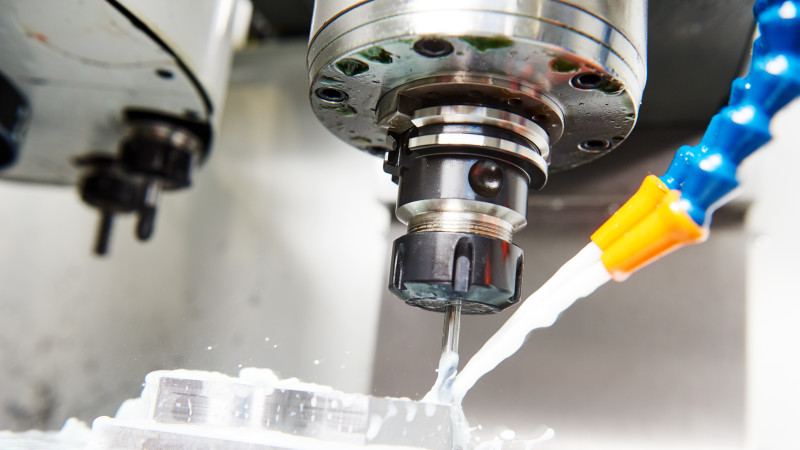Tool changing is fully automated in machining centers, from removal until the insertion of the new tool in the spindle, and takes less than a second. To achieve maximum system effectiveness, this process must function with ultimate reliability. The error-free functioning of the smallest inductive sensors plays a major role in ensuring this. For the machining center to function error-free, the machine control requires the following key information regarding the status of the collet chuck: open and no tool clasped, closed and no tool clasped, or closed and tool clasped. The answer to this challenge are inductive sensors. The task can be handled using either one measurement sensor or three switching inductive sensors.
In drive and clamping solutions, the sensor technology is integrated in the motor spindle. Given this confined space, the sensors must therefore be as small as possible, yet very powerful – characteristics found in the sensors from Swiss manufacturer Baumer offers the market’s largest portfolio of miniature and sub-miniature inductive sensors with micrometer measuring accuracy.
One example is the inductive proximity sensor IFRM 03 with a diameter of only 3 mm. It is available in various lengths starting at a mere 12 mm. Yet its miniature housing contains the complete evaluation electronics that are responsible for the high-repeatability switching points as well as the precise analog measurement values. In addition, these industrial-grade sensors are robust, EMC-stable, and comply with the protection class IP 67. The sensors remain unaffected by heat, oily environments, and vibrations that normally occur in tooling machines. This is where the decades of experience of Baumer in miniature sensor technology come to play.
Measuring Instead Of Switching
Rather than detecting the three positions of the drawbar with switching sensors, an analog inductive distance sensor offers an alternative solution. It requires a steep angle taper on the drawbar rather than a retainer. With a steep angle taper connected to the drawbar, it is possible for the measuring sensor to detect the position of the drawbar and thus recognize the state of the collet chuck. The distances or the respective clamping values that are evaluated by the control can be allocated to the three positions of the bar.
The use of a measurement sensor offers a number of advantages – on the one hand, the sensor requires less space than three individual switching sensors and also less mounting effort. On the other hand, the sensor constantly monitors the state of the tool clamp. This makes it possible, for example, to detect when the tool becomes loose or is not clasped centrally. This may happen if chips fall between the spindle and the tool. It can result in damage to the tool or quality problems of the machined part.
The precise sensors from Baumer optimize the repeatability of the tool clamping minimizing a potential lack of concentric runout of the used tool or detects it early on. A measuring sensor improves the reliability of the clamping system while ensuring both the quality of the processing as well as system availability, which is reflected in increased overall system effectiveness. This requires micrometer precision of the sensor, a detection range that is as large as possible, and a limited temperature drift. In this regard, AlphaProx, the smallest inductive distance sensors from Baumer, offering the highest performance on the market. The reliable measured values and high precision ensure users a maximum reproducibility for tool tensioning. Baumer has also introduced one of the smallest distance measurement inductive sensors on the market – the inductive analog sensor IF08. This product series has a box-shaped housing measuring 16 x 8 x 4.7 mm while containing the entire evaluation electronics and a drilled hole for flexible mounting even in confined mounting spaces. Its measuring distance is 2 mm with an output signal of 0 – 10 VDC.
THIS ARTICLE WAS ORIGINALLY PUBLISHED BY METROLOGY ON AUGUST 25, 2020.






